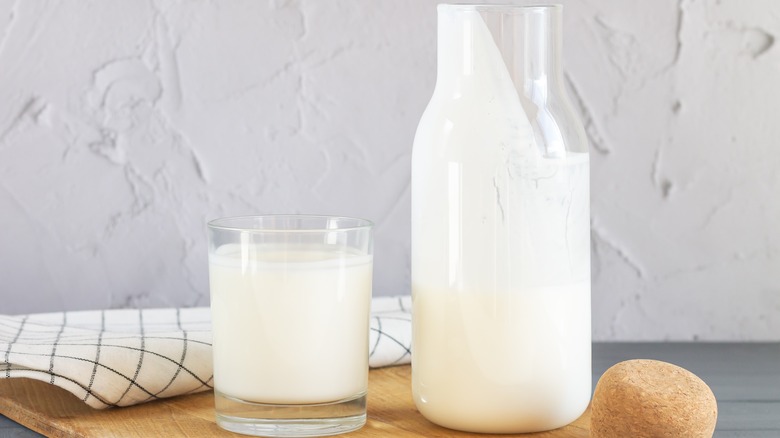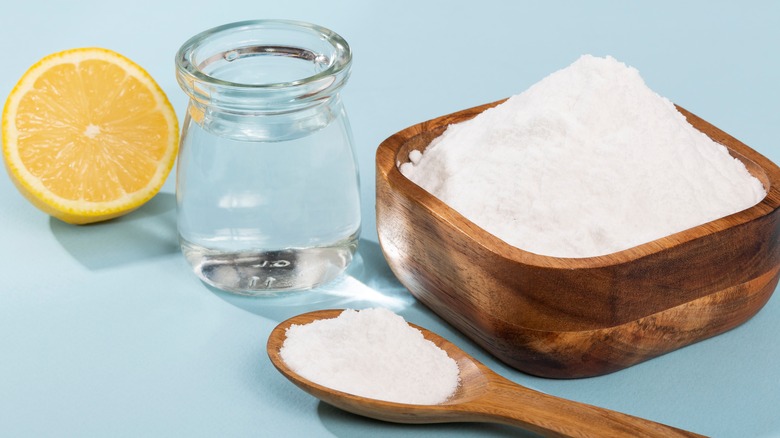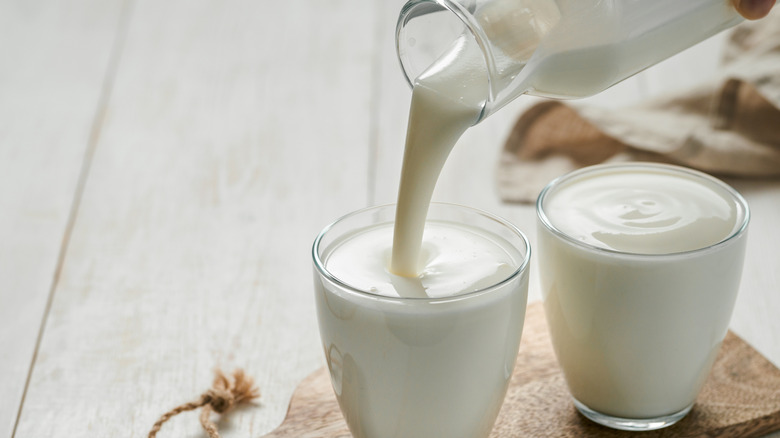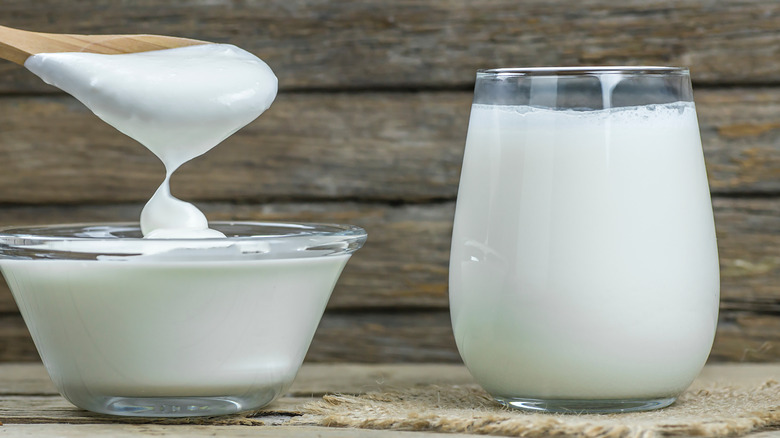Milk Mixed With Acid Isn't The Buttermilk Substitute You Thought It Was
It's one of the most ubiquitous hacks in baking: when you're out of buttermilk, you can just stir one tablespoon of lemon juice or distilled white vinegar into a cup of milk. Adding acid creates a chemical reaction, bunching the milk proteins in a similar way to how cheese curds get formed. It's a controlled curdle or "clabber." When the acid slightly clabbers the milk, it theoretically makes it thicker; between this thickening and the acidification, it's supposed to be a good substitute for buttermilk.
Becky Krystal of The Washington Post, isn't so sure, though, and she goes about busting this hack with some pH strips. The issue? Clabbering milk with a little acid doesn't give the ingredient the same thick viscosity as buttermilk, and it's not as low a pH as buttermilk. The result? Recipes that don't come out exactly the way they were written in either rise or consistency.
Low rise leavening
When Becky Krystal tested buttermilk and clabbered milk side by side, she found that the buttermilk held a pH of 5, whereas her milk and vinegar substitution registered a 6. With the pH scale tipping acidic under 7, both are acids and both will ostensibly do the job they're meant to in many recipes. Krystal's argument is that because the clabbered milk is a higher pH than buttermilk, it doesn't do the job as well.
In many recipes, like pancakes and biscuits, buttermilk is used for the chemical reaction that occurs between acid and baking soda. This is what causes it to rise — think about the old-school science fair volcano experiment. As the acid hits the baking soda, it releases gasses; this gas creates little bubbles in the batter that makes it fluffy. Without proper reactions, you won't have properly fluffy pancakes. Since the buttermilk is more acidic, Krystal's argument is that it will provide more rise to the baked good. She also didn't like that her pancake batter smelled like vinegar.
It's just not thick enough
The other issue here is the consistency — buttermilk is thick and viscous, whereas clabbered milk is much thinner. Buttermilk used to be the byproduct of making butter, but when buttermilk is made these days, it's generally its own product. Lactic bacterial culture is added to milk, causing it to thicken and acidify. Kerry Kaylegian, a food scientist at Penn State, explained to Becky Krystal that some producers add dry milk, stabilizers, and sometimes heat treat the buttermilk to amp up the thickness.
When milk is clabbered with vinegar or lemon juice, small curds form. The protein strands in the milk casein react to the acid and clump together, not unlike the beginning steps of cheesemaking. But as the cooks of America's Test Kitchen found, the small curds that form immediately do not really thicken the milk even after resting. The difference in consistency can change a recipe. The reason many recipe writers and chefs recommend weighing ingredients is to most closely replicate the original recipe; if one of the primary ingredients is behaving substantially differently than intended, the recipe will not turn out the same. Take pancakes as an example: buttermilk makes pancake batter noticeably thicker than clabbered milk pancakes. A thinner batter will spread more in the pan, leading to a thinner, less fluffy pancake — no matter how leavened it is from the acid reaction with the baking soda.
There are better substitutes
There are other alternatives to clabbered milk that seem to have better results. Kerry Kaylegian recommends using kefir, another cultured milk product. It has a thickness not far from buttermilk and a pH of 4.6. Lacking access to kefir, Kaylegian recommends plain yogurt. By thinning yogurt with a splash of water or milk, you can replicate the thickness of buttermilk and low pH of 4.6. Sour cream can be treated similarly to yogurt.
The other alternative to milk clabbered with vinegar, according to America's Test Kitchen, is cream of tartar. Most often known as a stabilizer for whipped egg whites, cream of tartar is a powdered acid. ATK found that 1 ½ teaspoons per cup of milk had the same leavening effect as buttermilk, and did not leave their test pancakes with the same off flavors that the clabbered milk left behind. If using this method, they recommend forgoing mixing it straight into the milk (it clumps) and instead mix it straight into your dry ingredients. Or, as Becky Krystal recommends, just use buttermilk.



